|
Originally published on StartAgain Media
“There is no way I can post that picture! The shirt I’m wearing is not flattering at all.” “My stomach looks huge in this pose.” “I just don’t have a yoga body—everyone must be laughing at me for posting these pictures. “It’s not like I’m doing handstands or arm balances. These aren’t very impressive.” These are just a small sampling of the judgments that I uttered when looking at pictures of me doing yoga during a recent thirty-day practice challenge. I’ve watched several of my friends who have sophisticated asana practices engage in challenges of various lengths. I found myself marveling at their physical prowess, toned bodies, and the sheer bravery they had in posting their work so openly on Facebook. When my good friend Marta Mrotek, a Phoenix-based yoga teacher, announced her thirty-day recovery yoga challenge on Instagram/Facebook, something inside of me told me, “Go for it.” I responded to the challenge largely because I trust Marta and really enjoy her style in teaching recovery yoga. There was part of me that thought, “Maybe it would be inspirational, on some level, for people to see a woman of size doing yoga poses?” While my trust of Marta and desire to continue advocating for plus-size women gave me the push to get started, within a few days I found myself really struggling with the challenge. As it turned out, the challenge became an exercise in working with my Higher Power to help me practice self-compassion and non-judgment in a fuller more mindful way. The first pose in the series was child’s pose. No problem. Not only is it one of my favorite poses, but when taken head-on at floor level with an Instagram filter applied, the picture came out really cool! The second pose was the cat/cow sequence, and when I saw my stomach rolls “flowing” in the short 30-second video, I was overcome with a sense of “Shit just got real!” My reaction to the sequence forced me to take a breath and practice acceptance. I accepted that my practice and body were where they were supposed to be at that moment. On day three for downward dog, the inner critic began to roar. The fat-speak was only part of it. Most of the self-criticism was about how incorrect my form looked—I sounded like a critical yoga teacher! Although it genuinely feels good for me to be in downward dog, I generally cannot keep my feet perfectly flat against the floor. Moreover, early on in my practice I discovered that I had to modify the stance somewhat to account for my weight. Looking at the picture, I noticed I was smiling back at myself. It was only after the picture was taken that the criticisms, and the “I’m not good enoughs” poured in. I was eventually able to muster enough perspective to remember that when I began my yoga practice I needed the wall to do Downward Dog. Although it took some time, I now appreciate it as a pose that feels good in my body, even if I don't look like a Yoga Journal model when doing it. Every day of the thirty-day challenge brought new insights. In the first week, after looking at the pictures, I caught myself saying things like, “I should put on another shirt for this picture and I’ll look better,” The first time I noticed that judgment, I committed to not go out of my way to put on special clothing (i.e., the “look good” outfits) for the challenge. Rather, I would have whoever was available to take the picture of me that day take the pose of the day in whatever outfit I happened to have on. I made a conscious decision to post the pictures, no matter what, as an exercise in self-acceptance, hoping that through this practice, I would build self-compassion. This decision was no easy task as I have struggled with my weight all of my life, enduring constant criticism from my peers and my parents during my formative years about my body. In the thirty days of the challenge, the universe highlighted some pretty amazing insights. First, I noticed that I rarely judge myself so harshly when I look at pictures of myself dancing. In two years of Dancing Mindfulness pictures, I might have made some passing judgments, but the look of total joy on my face as I dance allows me to see the whole, beautiful picture. Yoga pictures are another matter. It would be easy for me to conclude that since dancing is a more natural practice for me than yoga, of course the dance pictures won’t bother me as much. Although there is some truth to this insight, it strikes me as a shallow explanation. I sat with the contrast in pictures for a while. I realized that stepping out of my comfort zone challenged me to cultivate [a feeling of] self-compassion and self-acceptance. The asana component of yoga is not a limb of the practice that comes easily to me, likely due to my tendency to harshly judge myself and compare myself to others in the class or on a video. As a dance facilitator, this insight enhanced my empathy for those who I facilitate in Dancing Mindfulness; they also make the same comments about how they feel when they dance." Throughout the challenge I engaged in several conversations in the comments section of the pictures with friends, many of who practice. A major theme in our conversations was that there is no such thing as a “yoga body” or a “dancer’s body.” The very notion of a yoga body is a modern, Western conceptualization, one that emphasizes the physical fitness elements of the practice with little reverence to self-acceptance. I know that for many years I’ve kept myself trapped in doubt by thinking I didn’t have a right to practice either yoga or dance because I didn’t have “the body.” Thank God that today, I know these judgments are totally nonsense. Yet it is not lost on me that there are other women out there who keep themselves from transformative practices like yoga and dance because of these body judgments, fueled by a hypercritical society. Although my work with conscious dance has been a big factor in working through the majority of my body hatred issues, the yoga practice challenge prompted me to work on acceptance at a difference level. Looking at the pictures allowed me to see parts of my body that I really like, and certain poses gave me different perspectives on how I see my body. When judgments came up on the parts that didn’t look so great in a picture, I asked myself, “That part of your body doesn’t look so great according to whom? Yoga Journal? My mother? The girls I went to elementary school with? The awful guys who say terrible things about fat women?” I checked out the origin of these criticisms and in most cases, realized they were no longer valid. When I caught myself still struggling with a shard or two of doubt, I practiced gratitude. I thanked my Higher Power for giving me a healthy body that allows to practice the asana limb of yoga as gently or as vigorously as I choose to. Today, I am beyond grateful for having that choice. My practice is my practice, and it’s a practice that embraces the process. It is a practice that values self-compassion and self-respect. It is a practice that allows me to work with my Higher Power in a spirit of awareness and acceptance. For that, I am beyond grateful.
0 Comments
Originally published on StartAgain Media
“Dance is the hidden language of the soul.” –Martha Graham How could I not love an experience that is tagged as “Ditch the workout, join the party?” Zumba® fitness, which claims to offer just that, is wildly popular, packing classes at gyms and studios around the western world. When I first heard about Zumba® several years ago, I was naturally very intrigued. I danced throughout my childhood, although as an adult, I was seeking a dance form that would not require a partner, contained minimal risk of injury, and promoted no expectations of perfection or precision. I popped into my first class in 2008 and could barely tolerate it; in fact, I left early. It bothered me that I had such a visceral reaction to being in a Zumba® class. I loved to ballroom dance, and there are so many elements of a Latin dance within the Zumba® structure. After several attempts to get through a single Zumba® class over the years it finally dawned on me that the structure is what I resent, especially at this stage of my life. There is something very unappealing to me about being lined up like soldiers falling in line, trying to keep up with a high-energy instructor. I have several good friends who teach Zumba® and emphasize that the point is not to keep up, but to “do your best” and “have fun.” Yet there always seems to be this implied goal of one day being able to keep up with the drill sergeant. As a trained dancer in several forms, including ice dancing, I’ve taken more than my share of dance classes where learning the foundational steps in order to create a beautiful work of art is the primary objective. Looking back on my younger days, it was the experience of dancing around the house with no particular aim, or going into my parents basement to dance out these magical stories flowing from my own creative self that most resonate with me. From my earliest days, freestyle was my calling! I appreciate this training as something that worked for me well in my youth. As an adult who has finally claimed my birthright to be myself, I’ve learned not to torture myself with precision in the pursuit of my personal art. So why would I subject myself to a dance class experience that drives me crazy? On the other side of this coin, there is my friend Brandy, who is well aware of my disdain for Zumba® and similar fall-in-line-behind-the-leader dance forms. Brandy has come to several of my Dancing Mindfulness classes over the last few years, and they are not really for her. One day she shared with me, “Why you can’t stand Zumba® is the reason I like it; you are given something specific to do. With Dancing Mindfulness, I’m lost when you tell me to find my own movement.” Her comment made me realize how our respective personalities gravitated to the dance practices that best fit us. Brandy is the first to tell you that, in life, she needs specific guidance; I am one who tends to take it into account but ultimately I’m the free-spirit blowing in the wind who follows my intuition more than my intellect. I am not insinuating that Brandy or those like her are somehow inferior to me for needing more directive and regimented approaches to life. On the contrary, there are times in my life when it would be easier if I could just fall in line, keep my mouth shut, and listen to directives. The nature of my personality has made it very difficult, for instance, to work for someone else. In 2008 I began working as an independent contractor, a vocational state that allows me to flourish. It would be extremely difficult and spirit crushing for me to return to taking direct order from others in one 40-hour-a-week setting, yet there are times when I wish I just could just change who I am for the sake of having a more routine life. And having that wish granted would be an insult to a value I regard so highly: genuineness. To quote the well-worn cliché, it takes all types to make the world go around. There are so many dance forms, variations of dance, other movement practices, and combinations to accommodate our diversity. It is not lost on me that some people shudder when they’re exposed to Dancing Mindfulness, a practice that is very free-form, go-with-the-flow, and somatically introspective the same way that I cringe during Zumba®. Your reaction to a certain dance form teaches you about yourself and it is a powerful lesson that you can tap into and use for your own growth at any time in your life. This reaction is an amazing gift, if you choose to see it that way. Even if you are blocking yourself off from dancing or moving altogether, therein lays an opportunity to compassionately, non-judgmentally ask yourself, “What is this really about?” What I call “dance personality” does not have to be a black-or-white distinction; such polarities are rarely optimal in life. Even though I have settled into my free form conscious dance practices as most genuine for me at this time in my life, and Brandy is best described as someone who dances best when there is structure involved, there are people who fall in the middle. In fact, my most recent attempt at Zumba® came last week when I went out to support Kelsey Evans, a Dancing Mindfulness facilitator who is also a registered Zumba® instructor. Kelsey teaches both Dancing Mindfulness and Zumba® and I wanted to take a class with her. It’s beautiful to see how Kelsey can resonate with both forms, a trait that I believe is indicative of her beautifully flexible and multi-faceted nature. Taking steps outside of one’s comfort zone is a value that I routinely teach in Dancing Mindfulness. I find it very important to practice what I preach by attending some classes in both dance forms and yoga styles that aren’t optimally me, while not judging myself too harshly or labeling myself as a failure if I can’t keep up or tolerate a whole class (physically or emotionally). What was interesting about this most recent Zumba® experience is that while I could keep up physically, it felt a lot harder to do so because I was being guided in movements that did not feel genuine in my body at a certain time (I often feel the same way in Vinyasa yoga classes). As a result, the class felt like it took forever and it was an exercise in torture as opposed to a fun experience. For me, with Dancing Mindfulness, I can be practicing for three hours and it feels like 20 minutes, or practicing for 20 minutes and it feels like three hours. Geneen Roth, one of my favorite writers on food and body image, routinely teaches that if you are engaging in movement just for the sake of working out, you are setting yourself up to fail. Rather, she advises that we find forms of exercise that we genuinely enjoy doing. For me, Dancing Mindfulness or other conscious dance forms fit the bill. Dancing Mindfulness is a practice that I can engage in where clock time stops. For people like Brandy it is Zumba®, for you it may be finding the dance in the flow of your Vinyasa practice, or challenging yourself to master steps on the ice or on a ballroom. Maybe for you, it’s a combination of these forms, and if so, that is beautiful! It is beautiful because it is you. Find the movement practice that is genuine for you and refrain from judging yourself if thoughts are creeping in about what you should be doing instead. Originally published on StartAgain Media
“The pursuit of excellence is gratifying and healthy. The pursuit of perfection is frustrating, neurotic, and a terrible waste of time.” –Edwin Bliss One of my high school teacher friends posted this inspirational quote on the wall of his classroom for many years. Had I read it when I was in high school, I would have scoffed, saying that the man who wrote it was a quitter and that if I wasn’t aiming for perfection, than who was I? As a seventeen year old, I walked across the stage of my high school graduation adorned in medals and honor chords, poised to give my speech as one of four valedictorians of my graduating class. I battled crippling depression and was well on my way to developing a drug and alcohol problem. In the thick of high school graduation season, I find myself in an interesting debate on social media about this very concept of awarding degrees of excellence versus awarding perfection in the form of a top rank. This year, a wealthy, high-achieving suburban school district in my area eliminated the traditional valedictorian/salutatorian system of award, converting to the cum laude system used at most American and Canadian universities. Thus, there are still degrees of merit, with summa cum laude being the highest honor, but no vying for a top prize. Iboa participated in one comment war and then started one of my own after reposting the article on the change to get a temperature for this decision. As expected, opinions were mixed, with some, very predictably, arguing that this conversion represents a dumbing down, equaling of the playing field, or an awarding of mediocrity that seems to be pervading society. I have to admit, as a valedictorian myself, my gut told me upon reading the article that this is the right way to go. I don’t see the awarding of a summa cum laude distinction representing mediocrity at all. When I look back at my own high school class, those of us who would have qualified for the summa cum laude distinction (generally viewed as a 3.75-3.8 or higher) were really all in the same boat in terms of intelligence and potential—it was trace differences that separated us. In fact, I would argue that the woman who ended up as salutatorian was the most intelligent of us all, and she certainly gave the most emotionally intelligent speech at commencement. Looking back as an adult at the seventeen-year-old perfectionist who walked across the stage, I regret many of the things I did and didn’t do to earn that valedictory distinction. I remember, upon entering high school, when I learned there was such a thing as being a valedictorian, I told myself that I would graduate with that distinction; after all, it was something that would make me special. I wasn’t a very popular girl, struggled with the boys, was overweight, had an awkward personality, wasn’t very good at sports (although I tried my best), but I was on the reasonably intelligent side. Thus, I worked my butt off to get straight A’s in all of the honors classes, struggling and wasting so much time trying to grasp concepts that were not fundamentally natural for me to understand. I’ve always had a proclivity towards English and the humanities, but I made myself take all of the top-level honors courses in math and science because that’s what was expected of me. One night, during my senior year, I remember going cross-eyed as I looked down at my calculus book, crying from the visual strain and the idea that I would be a failure at life if I couldn’t master calculus. I often deprived myself of the fun things that high schoolers should be doing in order to meet my perfectionist demands. Although I went to some dances, I skipped my senior prom, something I regret to this day. While I was in high school, a state Senate program in Ohio made it possible for high achieving high school students to take early college work, with the state footing the bill. Of course I was intrigued at the idea of taking some different classes, but a deterrent was that any B’s I got in college work would be counted against my high school GPA. Not wanting to lose the valedictorian race, and knowing that some of the other top contenders were not taking advantage of the opportunity, I actually convinced my mother to pay for these courses that I could have taken for free so I wouldn’t lose the race. As an economically conscious adult looking back at this decision, I roll my eyes and applaud my peers who took advantage of the free college work…they may have finished 12th or even 20th in terms of high school class rank, but clearly they were the more intelligent ones in terms of real-life decision making! In my high school years, it wasn’t just the race for valedictorian that kept me obsessed. Perfection permeated other areas of my life. I involved myself in so many academic competitions like speech and debate, Science Fairs, History Days. If I ever finished less than first, I took it as a slam against my personhood. I purchased a No Fear brand t-shirt and wore it for much of my junior year: Second Place is the First Loser emblazed the back of the shirt. At the time, I told myself that it was an in-your-face attack at my competition, but reflecting now, I can see that this statement projected my personal shame—I was that loser if I couldn’t win the top prize. Looking back at it now, nothing could be further from the truth. Some of the greatest gains I’ve made in my life have come when I finished second or third in competitions, or out of the race altogether. Take speech and debate, for instance: I was routinely a second or third place finisher and competitions and believed my life to be over when I didn’t advance to the finals at state competition my senior year. Yet over the years I came back to coach other high school students in speech and debate as a part-time job and made many of the best friendships in by life by doing so. Public speaking is such a vital component of my present work, and being able to do it competently is a reward that has lasted longer than any trophy from competitions. To be clear, I am not anti-competition; I get concerned when competition completely consumes an individual and actually blocks her success. In college and graduate school, when the pressure was off and I actually let myself get some B’s, I learned more. The first B that I earned in college was a very liberating experience for me, yet I’ve heard horror stories of other valedictorians and perfectionist types simply crumble upon the first sign of failure in college. Although I felt academically free after getting that first B, the message of “I have to be perfect” was already engrained in many other aspects of my life. The pressure may have been off academically, but that “No-Fear” message of “I am a loser” remained a core of my identity. Mix that with the free-flowing offering of alcohol and drugs made available to this previous sheltered over-achiever, and by time I graduated college, I did so summa cum laude and with an addiction. In my first attempt at graduate school, I flunked out. It took me moving overseas (Bosnia) to work a job in humanitarian aid in order for me to gain some sense of perspective about just how petty so many of my previous obsessions really were. While in Bosnia, I met my first recovery sponsor, an American social worker who mentored me both in recovery and in what became my eventual career (counseling/human services). Interestingly, one of the biggest mental traps she worked with me on during early sobriety was letting go of the need to be right, the burning need I had to always win. There is a classic passage in the AA Big Book encouraging us to resign from the debating society, and when she shared that with me, I knew exactly what it meant. When I free myself of that all-encompassing desire to win or be perfect, I open up more possibilities for my life and wellness. I am sure that many of you will read this and think I’ve just become a lovey-dovey liberal since competing and getting ahead is a part of American life. If you want to survive this shark tank of life, you must have a competitive edge. To that criticism I say this: Giving up perfectionism, fierce competitiveness, and the need to be right does not mean that I’ve given up my work ethic. In my recovery I’ve come to truly embrace the logic of the Edwin Bliss quote—pursuing excellence is gratifying and healthy. I still work hard and my most people’s standards I do very well in life. How refreshing that today I can live this excellence without hating myself. That reward is more precious to me than any medal, certificate, trophy or honor of ages past… Originally Published on StartAgain Media
“There are an infinite number of ways in which people suffer. Therefore, there must be an infinite number of ways in which Dharma is available to people.” -a 98-year old Chan Master, as shared with Jon Kabat-Zinn What images do you associate with the word mindfulness? Do you see a fit yogi sitting on a beach in a perfect lotus position, entranced by the surrounding calm? Or are you going to a picture of a saintly Buddhist monk, eyes closed, clutching his prayer beads? Maybe you’re seeing a large group of people gathered at a festival, chanting “Om” in unison. You might even picture someone taking deliberate steps through a garden maze, savoring each pace of a walking meditation. Here’s a new one to try out: Imagine a dance floor full of people. Picture a community of all shapes, sizes, and physical abilities discovering their individual body’s sense of dance through the simplest of rhythmic movements. A gathering of beings, getting down and grooving to every musical genre imaginable. A collection of souls, each with his or her own unique story to tell, having fun and being themselves in the moment, tapping in to the fullness of their human potential. This is dancing mindfulness. In modern Western cultures, we tend to be inhibited when it comes to dancing, fearing that if we don’t dance well, then we really shouldn’t be dancing, victims of the looks are everything mentality. In essence, there’s a whole lot of judging--of others but especially of ourselves--and not a lot of witnessing. What if those of us who have experienced the beauty of mindful practice could work with people to move in a non-judgmental way and stay present? Imagine the healing potential we can help people realize, whether we are working with them in community or clinical settings. Tapping into each individual’s potential for movement, creating beauty, and achieving mindful awareness is what defines a dancing mindfulness practice. Dancing mindfulness helps people in the modern era get back to some of what we lost along the way. Dancing Mindfulness is a wellness practice that grew from my own clinical experiences working with trauma and addiction. Dancing Mindfulness can be learned in a group class and practiced in community, as well as individually; experience in yoga, meditation, or dance is not required to practice. Participants are simply asked to come as they are with attitudes of open-mindedness. Structured classes begin with a facilitator gently leading participants through a series of breathing and body awareness exercises. Following a mindful stretch series, the facilitator leads participants up to their feet for letting go and dancing with the freedom one might tap into by simply turning on some music and dancing around their houses. Many participants find this practice, especially when supported by the energy of other practitioners who are also taking risks, a cathartic experience. Although some find themselves overwhelmed and intimidated, they are encouraged to just acknowledge their experience, without judgment, and can choose to opt out of a certain dance or use their breath and movement as vehicles for moving through the discomfort. Safety is imperative to Dancing Mindfulness practice—facilitators emphasize that no one ought ever feel forced to participate in any component of the practice. The primary attitudes cultivated by mindful practice, as identified by Kabat-Zinn (2011) in his synthesis of mindfulness study, are used as thematic guidelines in structuring classes: acceptance, beginner’s mind, letting go, non-judging, non-striving, patience, and trust. Any of these attitudes may be used as a thematic guide in choosing music for the class, or the facilitator may call upon a series of these attitudes in dancing with an element. The elements of Dancing Mindfulness are networks through which mindfulness can be practiced: breath, body, mind, spirit, sound, story, and fusion of all the elements. A facilitator may elect to start the class working with breath in silence, advising participants that when they use their bodies to come up to their feet and dance, their breaths are with them as a guiding force. Using breath to guide movement is a way, for example, to cultivate the attitude of trust. Each class seems to take on a life of its own, depending on the venue and the students. Some classes seem to naturally cause participants to connect more with other dancers, but this process is to never be forced for the sake of safety. Other classes seem to be focused on personal depth of exploration. Regardless of the form the class takes, we always end on the ground with safety and relaxation, connecting back with the breath, the heartbeat, and often some light chanting. Since the beginning of 2013, I’ve had the privilege of training 52 facilitators in the United States and Great Britain who expressed an interest in the growing practice and a willingness to share it in their communities. It delights me that each facilitator brings her own authenticity to the practice and that no two facilitators lead a Dancing Mindfulness practice in exactly the same way. In the following series of blogs, The Art of Dancing Mindfully, I will be exploring more facets of the Dancing Mindfulness practice and its manifestations in both the group and individual format. See my earlier StartAgain blog, “This is Why I Dance” for a personal reflection on my individualized Dancing Mindfulness practice. I will share a bit more of my own story with developing and taking the Dancing Mindfulness practice into the community, in addition to addressing some of the criticisms I’ve heard that Dancing Mindfulness “isn’t really mindfulness.” I will also share some reflections of other people who’ve benefitted from cultivating a personal and communal Dancing Mindfulness practice. If you’d like to read more about the practice and see some sample videos of how the practice plays out, please go to: www.dancingmindfulness.com. REFERENCE Kabat-Zinn, J. (2011). Mindfulness for beginners: Reclaiming the present moment-and your life. Boulder, CO: Sounds True Books. Originally published on StartAgain Media
“Mindfulness is the actualization of humanity’s inherent basic goodness.” -Jakusho Kwong-roshi This program’s content is primarily self-discovery or self-care in nature and is not acceptable as continuing education. Several continuing education approval boards, including my own profession’s in my home state, use this line, or some variation of it, to reject programs related to yoga, compassion fatigue, self-care, or any other programs that they deem to be too “new age,” “expressive,” or “experiential.” It’s sad to say that at this point, I’m used to writing appeal letters and making a case for the legitimacy of mindful, experiential learning as valid continuing education for helping professionals. In fairness, not all regulatory continuing education overseers are in the dark ages; just about all of the national accreditation bodies are on board with the legitimacy of mind-body healing and creative approaches to learning. My negative experiences have been largely on the state level. Last year, when I stood before the counselor standards board of my home state, my jaw dropped and I literally froze in shock to hear one of the members say, “We set a dangerous precedent when we call self-care education. Some of the programs you do are more about professionals trying out some of these things (e.g., yoga, dance, meditation), and counselors should be doing that on their own time. Before long, counselors are going to want to count going on retreats and chanting and lighting incense and going to their own therapy as education. Education is education and self-care is self-care.” After taking some deep ujjayi breaths to move from the freeze response, I suggested that if we awarded counselors a certain portion of their required continuing education credits to try out events and programs that teach them how to take care of themselves better, then maybe we wouldn’t have such high rates of burnout. Maybe there wouldn’t be so many ethical violations. Self-care, in the eyes of many of us, is the most valuable continuing education of all. . The anger I experienced in response to their ignorance about the value of self-care as education has made me turn to the literature to further craft some of my arguments. There are over twenty peer-reviewed articles presenting research from both a qualitative and quantitative perspective on the value of self-care, particularly mindfulness meditation training, While I am currently in the process of formally synthesizing and reviewing these for an academic article, I wish to share with you some of the most poignant conclusions from this cannon through my blog: · Promoting mindfulness in psychotherapists-in-training could positively influence the therapeutic course and treatment results in patients (randomized, double-blind controlled study; Grepmair, Mitterlehner, Loew, et al, 2007) · Health care professionals participating in a mindfulness-based stress reduction program (MBSR) were able to more fully identify their own themes of perfectionism, the automaticity of “other focus,” and their tendencies to always enter “fixer” mode; this recognition led to numerous changes along personal and professional domains (grounded theory; Irving, Park-Saltzman, Fitzpatrick, et al., 2014); a similar study that exclusively studied nurses yielded similar findings (Frisvold, Lindquist, McAlpine, 2012) · In an extensive mixed methods research study with working psychotherapists from a variety of theoretical backgrounds, Keane (2013) concluded that personal mindfulness practice can enhance key therapist abilities (e.g., attention) and qualities (e.g., empathy) that have a positive influence on therapeutic training. He contends that mindfulness practice could provide a useful adjunct to psychotherapy training and be an important resource in the continuing professional development of therapists across modalities. In another qualitative study article that demonstrates the positive impact of mindfulness training on therapist trainees, Christopher, Chrisman, Trotter-Mathison, et al. (2011) make one of the wisest contentions that I’ve ever read in peer-reviewed literature: Although self-care is often touted as being important to counselors and psychotherapists, historically little has been done within graduate school to provide future therapists with self-care strategies (p. 318). When I was a graduate student at both the Master’s and Ph.D. level, little, if anything was said about the importance of self-care. In working with graduate students as a mentor and supervisor myself now, it saddens me that the landscape is still pretty bleak in most programs. If you are in a graduate program or have gone through one where self-care and self-discovery was promoted, I would be very happy to hear from you about your experiences and how they impacted your formation as a helper. For those of us who believe in the value of self-care and self-discovery and have experienced its benefits in our professional formation, the responsibility is ours to speak out about how it works. References Christopher, J.C., Chrisman, J.A., Trotter-Mathison, M.J., Schure, M.B., Dahlen, P., & Christopher, S.C. (2011). Perceptions of the long-term influence of mindfulness training on counselors and psychotherapists: A qualitative inquiry. Journal of Humanistic Psychology, 51(3), 318-349. Frisvold, M. H., Lindquist, R., & McAlpine, C. P. (2012). Living life in balance at midlife: Lessons learned from mindfulness. Western Journal of Nursing Research, 34, 265-278. Grepmair, L., Mitterlehner, F., Loew, T., Bachler, E., Rother, W., & Nickel, M. (2007). Promoting mindfulness in psychotherapists in training influences the treatment results of their patients: A randomized, double-blind controlled study. Psychotherapy and Psychosomatics, 76, 332-338. Irving, J.A., Park-Saltzman, J., Fitzpatrick, M., Dobkin, P.L., Chen, A., & Hutchinson, T. (2014). Experiences of health care professionals enrolled in mindfulness-based medical practice: A grounded theory model. Mindfulness, 5, 60-71. Keane, A. (2013). The influence of therapist mindfulness practice on psychotherapeutic work: A mixed-methods study. Mindfulness. DOI: 10.1007/s12671-013-0223-9. Originally Published on StartAgain Media
“Water is the driving force in nature.” -Leonardo da Vinci When I was a child, I rolled my eyes when my health teacher, the talk shows that my mother watched, and yes, my mother herself told me that I needed to drink more water. Consuming 6-8 glasses of such a tasteless substance seemed like a chore. As I’ve aged, my position on water’s tastelessness has gratefully changed, along with my attitude towards it. Throughout my recovery, the importance of water as a vital piece of the wellness puzzle continues to grow, whether I’m drinking it, bathing in it, swimming in it, listening to it, or just appreciating the vast array of metaphors that come with the flow of water. In my career as a trauma educator, I’ve spent the last six years on my feet in front of audiences, talking for three, four, or up to eight hours at a time. When I began this portion of my work in 2008, my resistances about drinking so much water were still pretty high. Before I knew it, I realized that constantly hydrating was a necessity to not only keep my lips moistened but also to keep my body temperature regulated and my energy up. Sipping on coffee, soda, or even juice just didn’t cut it quite like water. I noticed that as I began drinking more water during my talks and classes, my desire for it in other areas of my life intensified—consuming a glass in the morning and a glass in the evening, drinking it with meals, sipping on it during clinical sessions, and even using it a vehicle through which to practice mindfulness. To me, there is no greater joy than just being in the moment with water. As a person who naturally overheats, taking a few mindful sips of water and noticing the slow trickle down my throat and into the rest of my body is one of the best techniques I have for coming back into my body when the literal heat or the heat of stress makes my head float away. On the other side of the spectrum, His Holiness the Dalai Lama discloses in much of his writing that sipping on hot water is a favorite activity of his for calming the nerves. As a young man, he found himself drinking a lot of tea and then one day it struck him that his body didn’t want the tea, his body wanted the warmth. I am also a big believer in the cleansing properties of water, not just literal, but energetic. When I began teaching with more and more frequency, a holistic health care practitioner I see suggested that after every talk I give, dance class I teach, or day’s worth of clients I see, to take a shower. As someone who was raised to shower in the morning or evening, taking showers at 5 or 6 in the afternoon became a bit of a shift in my routine, but it’s one I haven’t regretted. The difference in energy I feel afterwards is incredible. In the process, I’ve also been able to practice gratitude that I have the means to be able to take two showers a day, as it is not lost on me that a good portion of our planet is without a fresh water supply. I recently engaged in a wonderful conversation with the director of a treatment center. In dialoguing about the ways to practice mindfulness in everything, he shared, “I practice gratitude by realizing there are worse ways to start the day than by taking a hot shower.” How right he is. I can probably write a whole new blog post just on the virtues of soaking in a hot tub or taking a walk along the beach or a lake and listening to the music that the water creates. In sum, there are so many ways to practice wellness through getting in touch with the flow of water. Yes, nutritionists and healthy living experts continue to extol the virtues of drinking water, pointing out just how vital it is to hydrate for our health. My contention is that the more you spend time with water and its various form, the more you will realize this truth for yourself. One of the most formative lectures I heard as a student came from a PTSD specialist and retired Israeli Army officer, Elishiva Kaftal. In speaking about the importance of preventative self-care for clinicians she noted, “When you grow up in the Middle East, you know that if you’re drinking the water when you’re thirsty, it’s too late—you have to be constantly hydrating to stay healthy.” What fantastic wisdom that can be appreciated both literally and figuratively! Originally published on StartAgain Media
“Dance, when you're broken open. Dance, if you've torn the bandage off. Dance in the middle of the fighting. Dance in your blood. Dance when you're perfectly free.” -Rumi Dancing is one of the many outlets that we, as helpers, healers, and people on the road of recovery have at our disposal for emotional cleansing. For me, it’s been the ultimate channel for self-care and burnout prevention. Let share a very personal story of how I experienced the benefits of mindfulness practice, specifically dancing mindfulness practice, to cope with a loss in my own life. Loss is a wound, a trauma, which needs healing attention like any other wound, especially losses that shake us to the cores of our being. When I had almost a decade sober, many years of practice as a trauma counselor, and a great deal of experience practicing yoga, I experienced a loss that, at the time, I thought could not be healed... all while I was expected to keep up a busy schedule working and teaching. Shortly after my first marriage ended, I reconnected with an old high school boyfriend, a dear figure from my past who I long regarded as the one who got away. We had a passionate, fiery love affair for the better part of a year, and everything in me really believed that some cosmic force was bringing each other back into our lives. The way I was able to open my heart up to him again surprised even me, so when he made it very clear to me that he could not commit to giving me what I wanted because he never saw himself getting married or having children, I was crushed. It was the ultimate case of two people who loved each other very deeply, but could not be together because of who we, respectively, were as people. The grief I experienced when this relationship crumbled was unlike any I had ever experienced; worse than any death, even worse than my divorce. At one point I feel into a very deep depressive episode that seriously got in the way of my ability to function in my work life. I remember using my support network a great deal during this period, being honest about my perceived professional impairment, and the support was imperative for getting me through—plus some much needed down time to just do the bare minimum of work and let myself grieve. Looking back at it now, I can clearly identify that my work with mindfulness practices, especially moving mindfulness meditations like yoga and dance, and even the simple practices like breath work helped me to ride out this loss and adapt to it without letting it destroy me. When the feelings came, I surfed the waves of emotion, breathing through my tears, making a commitment not to judge myself at any juncture for feeling what I was feeling. The dancing mindfulness I practiced, even prior to formally developing the Dancing Mindfulness practice helped me transform my grief into beauty, and from this I was able to move forward. In the spare room at my house, which once served as my ex-husband’s office, I committed to dancing each night in a mindful way, choosing music that helped me dig into the emotion and be with it. At times, I moved with silence or sat in silent contemplation, allowing a healing fusion to take place. Indeed, the easiest way out of the emotional storm was through it. I practiced letting go of that great love of my life, and as a result, the path was cleared and the heart was open for my current husband to come into my life. We share a passionate love and a complementary vision of life, a manifestation of the trust I developed in practicing mindfulness. As much as I believe in formal psychotherapy, I don’t think that anything could have helped me grieve the loss of that relationship as effectively as mindfulness practice did. Originally published on StartAgain Media
I began practicing yoga several years into my career as a helping professional. When I started getting involved at a studio near my home, I noticed a poster for a class that just spoke to me and captured everything I needed: Restorative Yoga. Usually described as a gentle yoga practice that helps its practitioners to deeply relax, Restorative Yoga is spectacular for helping all people to find a deep core of balance and total peace. When I found Restorative Yoga many years ago, I knew that I needed the help to relax. After all, helping people to relax was such an important part of my job as a therapist, but who was helping me? People who practice yoga primarily for physical fitness may judge Restorative Yoga with as a wimpy practice that makes use of all of those props. As one person I know would be likely to say, “Well it’s not very challenging.” For me, a recovering workaholic who is always on the go, my mind always moving, Restorative Yoga provides a tremendous challenge. Anytime a recovering workaholic and co-dependent can earmark a couple of hours for herself to not only relax, but receive assistance to relax in the form of a Restorative Yoga teacher or facilitator, it is a challenge. Speaking for myself, long affected by old messages that I must being “doing” something in order to be worthy of taking up space, any time I can enjoy just “being” is a major point of progress in my recovery. Dr. Judith Hanson Lasater is typically credited as the founding mother of Restorative Yoga as a practice. As shared on her website, “We work very hard in our lives, and while we may sleep, we rarely take time to rest. Restorative yoga poses help us learn to relax and rest deeply and completely.” As a helping professional, I need this practice! Although I’ve taken Restorative Yoga classes from a variety of teachers over the years, and have even learned to self-practice, my most recent experience with Restorative Yoga has been the most impacting. My yoga teacher and mentor, Maureen Lauer-Gatta, E-RYT-500 recently teamed up with two other talented people at our studio, Teresa Lisum, a retired educator/Dancing Mindfulness facilitator and Ethical Massage Practitioner, and Anthony Ellis, a singing bowl player. They offer monthly events called Retune and Recharge in which Maureen leads the participants through a restorative yoga class as Anthony plays; Teresa circulates the room assisting Maureen with deepening relaxation through appropriate physical touch. This past weekend, on my much-needed day off, I made my way to my home studio not to teach or to lead, but simply to receive. The whole practice, as promised, helped to retune and recharge me after a very stressful couple of weeks. There was a point in the class where I was lying there in a reclined, supported bound angle pose, completely relaxed in my breath, noticing the flow of the singing bowls’ vibrations moving through my body. The sonic vibrations were literally healing my insides energetically, and with every tone, my breath quality just continued to deepen. I was completely relaxed, and ultimately, completely grateful. Grateful for the practice and the event, grateful to Maureen, Teresa, and Anthony for their service, grateful for the studio, grateful for the resources I have to take such a class, and most importantly, grateful to myself for recognizing the importance of nurturing myself in this way! Wherever you’re at in the country or in the world, I encourage you to look up where Restorative Yoga may be offered in your community. Even if you have a very active, physically challenging yoga practice and experience the benefits of such a practice, consider giving Restorative Yoga a try; you might be surprised at the results, especially if you work as a helper or healer. For more information online, you can go to www.restorativeyogateachers.com, and there are a variety of home practice DVDs that you can access. Originally Published on StartAgain Media
When I was in graduate school for mental health counseling, I didn’t learn a damn thing about self-care. The official curriculum obsessively focused on theories and techniques, standards and measures; the faculty just seemed to assume that we knew how to take care of ourselves. My Ph.D. program didn’t offer me with much more in the way of guidance and instruction, and in talking to my peers in the helping professionals, not learning to take care of ourselves as professionals is the exception rather than the rule in graduate training. And then we wonder why there is such high turnover in the counseling professions; we lament when people, on average end of leaving the fields of helping after 3-4 years of work. Clearly something is lacking in how we train helping professionals… Although the field has evolved since the days where psychodynamic methods ruled the landscape, there is something to be said about the tradition of that to become a psychoanalyst, you needed to be psychoanalyzed yourself. When I asked my graduate school advisor (Master’s level) why personal counseling is not required to become a counselor, she answered that too many legal barriers exist in the modern era to making people do counseling. Other research-driven peers insist that the empirical literature is not conclusive on whether or not you have to go through personal therapy to be a good therapist. Yet there is some evidence out of an amazing study done in Australia (Charman, 2005) to suggest that high performers (e.g., therapists whose patients are more likely to meet established outcomes measures) describe themselves as mindful, intelligent, intuitive, open, patient, creative, flexible in personality, and self-aware. Moreover, these helpers also identify as not having an agenda, as having care and concern for others, having an awareness of their own issues, and are able to take care of themselves. In my view, this study gives evidence to what may of us discover the hard way---you must take care of yourself in order to be effective as a helper. “Counselor, heal thyself” is more than just a cute saying. There are other ways besides professional therapy to take care of oneself (yet speaking for myself, I would never have survived as a therapist if I didn’t have my own therapy at the onset and at strategic points throughout); regular practices in meditation and mindfulness, spiritual practices, involvement with 12-step or other support groups, regular exercise, setting time aside for hobbies, and having clear release rituals are just a few that jump out as powerful strategies. In the coming weeks, I will be featuring a series on strategies for improving self-care as helping professionals. I’ll discuss some of the methods I talked about here in greater depth, take a look at why it is so hard for those of us who are drawn to helping others to follow our own suggestions for self-care, and I’ll talk about my practice’s commitment to helping other professionals in an approach that I call Healing the Wounded Healers. Reference Charman, D. (2005). What makes for a “good” therapist? A review. Psychotherapy in Australia, 11(3), 68–72. |
Dr. Jamie MarichCurator of the Dancing Mindfulness expressive arts blog: a celebration of mindfully-inspired, multi-modal creativity Archives
September 2022
Categories
All
|
Contact |
Memberships & Affiliations |
|
Please direct all inquiries to:
[email protected] © Mindful Ohio & The Institute for Creative Mindfulness, 2021 Terms of Use Privacy Policy |
Dancing Mindfulness/The Institute for Creative Mindfulness is an organizational member of the International Association of Expressive Arts Therapists, the Dance First Association, and NALGAP: The Association of Gay, Lesbian, Bisexual, Transgender, Addiction Professionals and Their Allies; Dancing Mindfulness proudly partners with The Breathe Network and Y12SR: The Yoga of 12-Step Recovery in our shared missions.
|
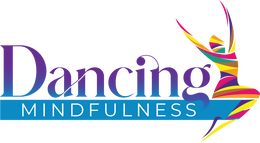
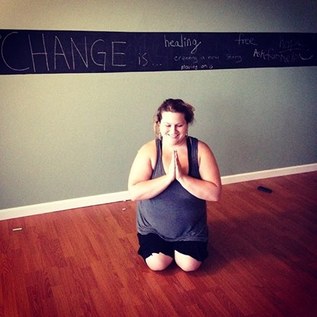
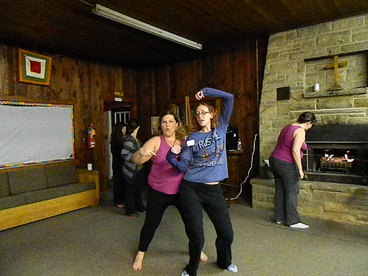
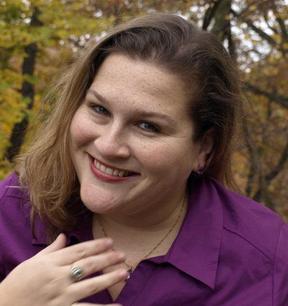
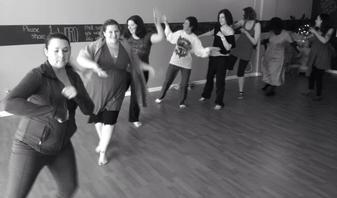
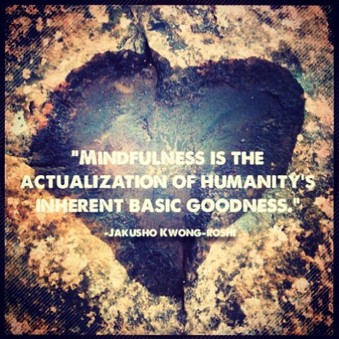
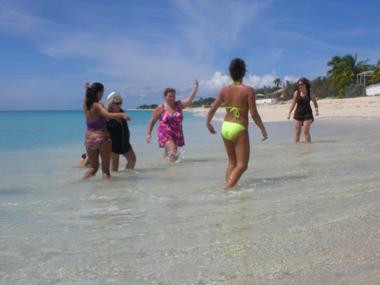
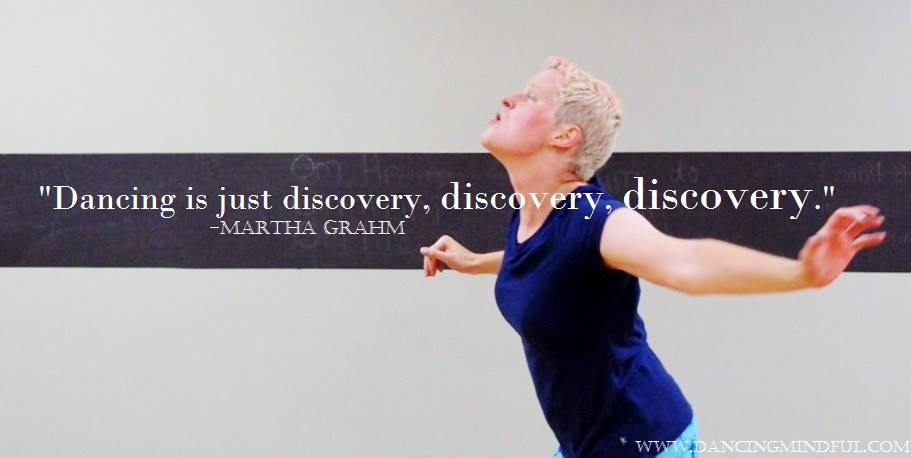
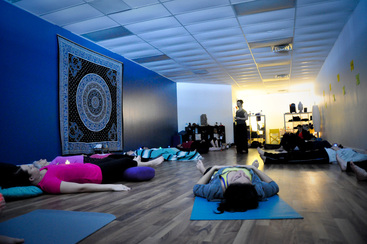
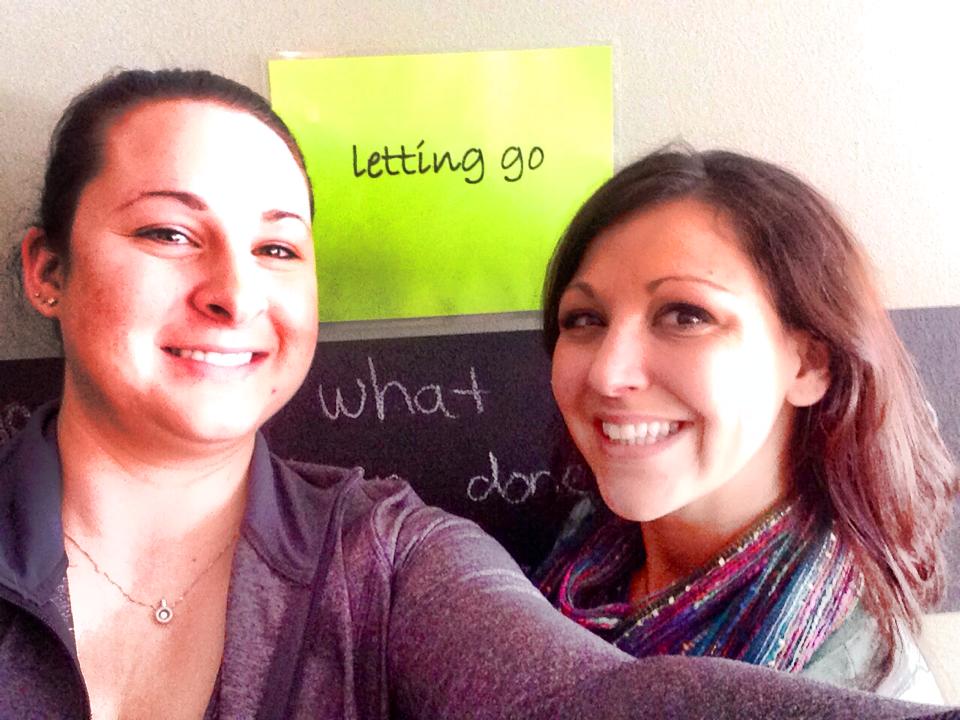
 RSS Feed
RSS Feed